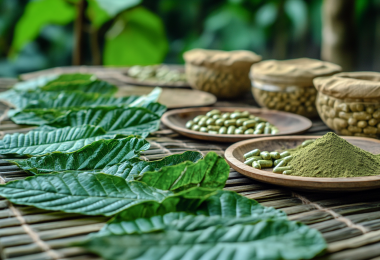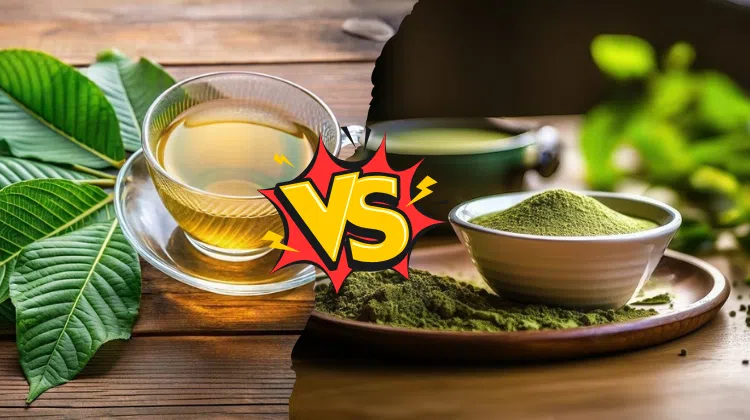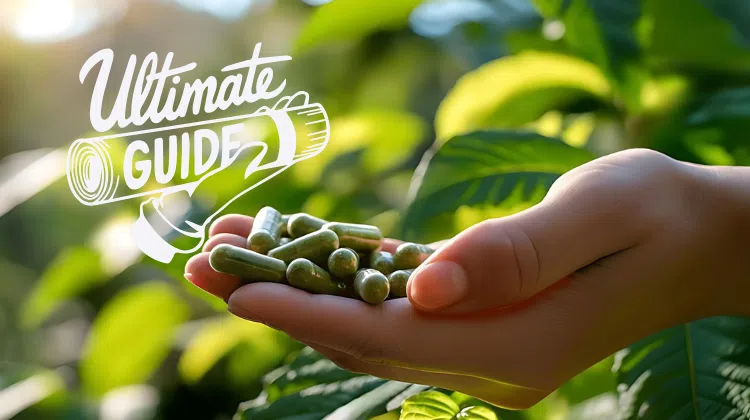
What is Kratom? The Complete Guide from Golden Monk
Introduction Kratom is a plant that inspires curiosity, debate, and misunderstanding. Some people hear about...
View PostYour cart is currently empty.
Continue ShoppingMenu
Cart
Your cart is currently empty.
Continue ShoppingSearch

When discussing ‘Kratom Tea vs Powder,’ you must understand that Kratom tea is brewed from leaves or powder in hot water for a smoother, quicker-onset experience. In contrast, Kratom powder is the raw ground leaf that offers versatility, storage life, and a complete alkaloid profile.
Well, almost everyone knows Kratom has long been part of Southeast Asian traditions, where its leaves are valued for their natural properties and versatility. Today, it has gained global interest, with two of the most common formats being Kratom tea and Kratom powder. Each has its own preparation style, effects, and benefits. By comparing Kratom tea vs powder, you can decide which option best fits your preferences and lifestyle.
Kratom powder begins with carefully harvested leaves from the Mitragyna speciosa tree, native to Southeast Asia. Once dried, the leaves are finely ground into a soft, versatile powder that retains the plant’s natural profile.
Many people appreciate the flexibility of this format. When learning how to prepare Kratom powder, some choose to blend it into smoothies, stir it into beverages, or place it into capsules for convenience. Its adaptability makes it a go-to option for those who want a quick, versatile solution at home or on the go.
Kratom powder also serves as the base for other popular forms, such as Kratom tea powder, liquid extracts, Kratom gummies, Kratom capsules, and various crafted products, further cementing its place as one of the most widely used formats.
Kratom tea is prepared by steeping Kratom leaves, or Kratom powder, in hot water, allowing its natural compounds to infuse into the liquid. This traditional method has been practiced in Southeast Asia for centuries, often shared in social settings or enjoyed during moments of quiet reflection.
Today, Kratom tea has taken on many forms, from simple homemade brews to ready-made Kratom tea drinks. Some prefer to add citrus, honey, or other natural ingredients to enhance the experience. Whether made from Kratom leaf tea or Kratom powder tea, this approach offers a more gradual and ritualistic preparation process that many find rewarding.
If you also want to try Kratom tea, check out our blog on How to make Kratom tea.
While both Kratom tea and Kratom powder come from the same source, their preparation, strength, and experience can vary significantly. Here’s a side-by-side look:
Factor | Kratom Tea | Kratom Powder |
Preparation | Steeping leaves or powder in hot water, often with added ingredients. | Ready to incorporate into drinks, smoothies, or capsules with minimal prep. |
Strength | It may be slightly reduced due to heat during brewing. | Retains a complete profile of naturally occurring compounds. |
Onset | Typically quicker, as compounds are already dissolved. | It can take longer to notice effects compared to tea. |
Convenience | Requires brewing and straining, making it more time-intensive. | Easy to prepare and store for on-the-go routines. |
Customization | Flavor can be adjusted with citrus, sweeteners, or herbs. | Can be blended into different recipes or beverages. |
Shelf Life | Best enjoyed fresh; short storage time. | Longer storage potential when appropriately kept sealed. |
Both Kratom tea and Kratom powder share the same origin but differ in preparation, effects, and convenience. Tea offers a ritual-like process, quicker onset, and flavor customization, while powder provides versatility, long storage life, and the full strength of the plant’s profile. Ultimately, choosing between ‘Kratom tea vs powder’ depends on whether you value tradition and ritual or convenience and adaptability.
Kratom tea effects can vary based on preparation style and leaf type. Many prefer tea for its smoother profile compared to powder and its quicker onset.
Beginners often find Kratom tea or capsules easier to start with, as tea allows for a simple preparation and capsules require no preparation at all. The best choice depends on personal preference, comfort with preparation, and how quickly one wants to experience the effects.
Capsules are often the most convenient since they require no preparation and are easy to carry anywhere. Tea can be made in advance and stored, but it still involves brewing. For those prioritizing speed and portability, capsules generally win in terms of day-to-day convenience.
To prepare a strong Kratom tea, some adjust brewing time, add acidic ingredients like lemon or experiment with fresh Kratom powder.

Introduction Kratom is a plant that inspires curiosity, debate, and misunderstanding. Some people hear about...
View Post
Ever wondered what’s really in your Kratom? Lab test reports are the key to understanding...
View Post
Are you also confused about which Kratom form you should try for your busy schedule?...
View PostBy clicking yes you also confirm that you have read and agree to GoldenMonk's Terms of Service and Privacy Policy and Goldenmonks’s service provider’s terms of service and privacy policy.